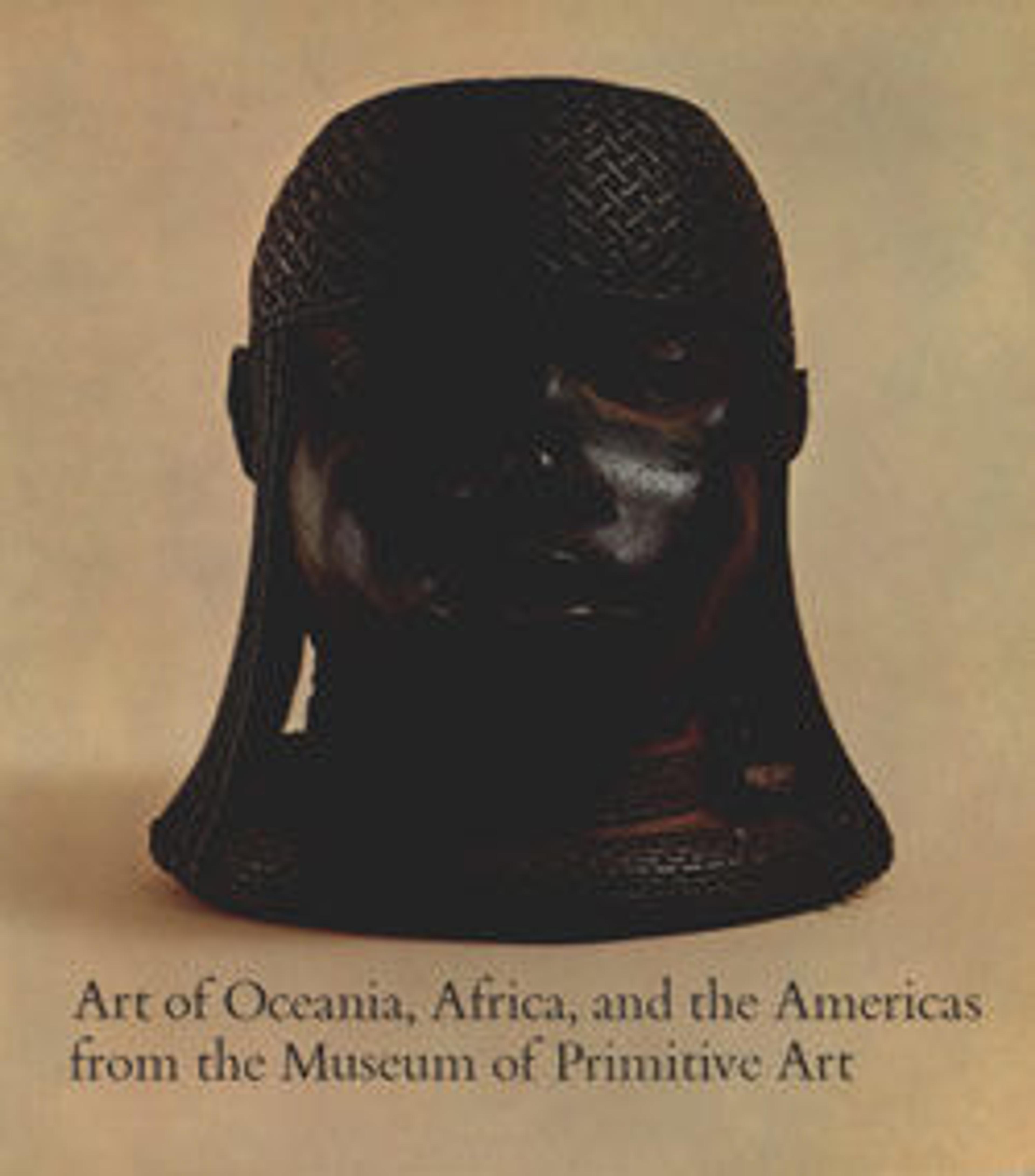Bottle with deity
Between 500 and 1000 CE, life in the Central Andes was transformed by the rise of two powerful highland civilizations, the Wari and the Tiwanaku. These states shared a suite of artistic motifs, including supernatural figures, suggesting a common religious tradition despite their different histories. Wari was a territorial empire expanding from its homeland in Ayacucho, and it came to dominate much of what is now Peru. Wari artists deployed multiple, colored slips (slurries of fine clay particles plus mineral pigments) developed by ceramicists of the earlier south coast Nasca culture. Tiwanaku, by contrast, centered in the southern part of the Titicaca Basin, integrated different cultures from the Atacama Desert to the tropical valleys of the eastern cordillera through a powerful religious ideology and extensive trade networks. Both highland states fostered the development of textiles, stonework, and other arts through their dazzlingly complex compositions. The prestige of these visual traditions was felt across the Andes, as Wari and Tiwanaku creations were traded and imitated even beyond their dominions.
This vessel’s diminutive size belies the power of the image. The body of this vessel features a supernatural face crossed fangs, split eyes, and rays extending outward from the face, terminating in bird heads, cotton plants, and three-fingered hands. Another face, depicted on the neck of the bottle, features large white eyes and a modeled nose with a feline painted down the center. Two raptors face each other on each cheek. The top of the bottle—the figure’s hat—has two abstract hands separated by a black and white chevron design. A small ceramic loop in the rear may have provided a place to attach a thread used hold a cap for the bottle or an implement for recovering the contents. This bottle is similar to an Atacaro style ceramic illustrated by Bergh (2012: pp. 136, fig. 115).
References and Further Reading
Bergh, Susan E. Wari: Lords of the Ancient Andes. New York and Cleveland: Thames & Hudson; The Cleveland Museum of Art, 2012.
Cabrera Romero, Martha, et al., Wari: Arte precolombino Peruano. Seville: Centro Cultural El Monte, 2001.
Giersz, Milosz, and Cecilia Pardo. Castillo de Huarmey: El mausoleo imperial Wari. Lima: Museo de Arte de Lima, 2014.
Isbell, William H. "Cultural Diversity in Middle Horizon Wari: Mortuary Practices, Ceramic Styles, and Religious Experience." Research Papers of the Anthropological Institute Vol. 8 (2019): 10-45.
Isbell, William Harris, Mauricio Uribe, Anne Tiballi, and Edward P. Zegarra, eds. Images in Action: the Southern Andean Iconographic Series. Los Angeles, CA: UCLA Cotsen Institute of Archaeology Press, 2018.
Knobloch, Patricia J. "A Study of the Andean Huari Ceramics from the Early Intermediate Period to the Middle Horizon Epoch I." Ph.D. Dissertation, State University of New York, 1983.
Menzel, Dorothy. "New Data on the Huari Empire in Middle Horizon Epoch 2A." Ñawpa Pacha 6 (1968): 47–114.
This vessel’s diminutive size belies the power of the image. The body of this vessel features a supernatural face crossed fangs, split eyes, and rays extending outward from the face, terminating in bird heads, cotton plants, and three-fingered hands. Another face, depicted on the neck of the bottle, features large white eyes and a modeled nose with a feline painted down the center. Two raptors face each other on each cheek. The top of the bottle—the figure’s hat—has two abstract hands separated by a black and white chevron design. A small ceramic loop in the rear may have provided a place to attach a thread used hold a cap for the bottle or an implement for recovering the contents. This bottle is similar to an Atacaro style ceramic illustrated by Bergh (2012: pp. 136, fig. 115).
References and Further Reading
Bergh, Susan E. Wari: Lords of the Ancient Andes. New York and Cleveland: Thames & Hudson; The Cleveland Museum of Art, 2012.
Cabrera Romero, Martha, et al., Wari: Arte precolombino Peruano. Seville: Centro Cultural El Monte, 2001.
Giersz, Milosz, and Cecilia Pardo. Castillo de Huarmey: El mausoleo imperial Wari. Lima: Museo de Arte de Lima, 2014.
Isbell, William H. "Cultural Diversity in Middle Horizon Wari: Mortuary Practices, Ceramic Styles, and Religious Experience." Research Papers of the Anthropological Institute Vol. 8 (2019): 10-45.
Isbell, William Harris, Mauricio Uribe, Anne Tiballi, and Edward P. Zegarra, eds. Images in Action: the Southern Andean Iconographic Series. Los Angeles, CA: UCLA Cotsen Institute of Archaeology Press, 2018.
Knobloch, Patricia J. "A Study of the Andean Huari Ceramics from the Early Intermediate Period to the Middle Horizon Epoch I." Ph.D. Dissertation, State University of New York, 1983.
Menzel, Dorothy. "New Data on the Huari Empire in Middle Horizon Epoch 2A." Ñawpa Pacha 6 (1968): 47–114.
Artwork Details
- Title:Bottle with deity
- Artist:Wari artist(s)
- Date:650–1000 CE
- Geography:Peru
- Culture:Wari
- Medium:Ceramic, slip
- Dimensions:H. 6 1/4 × W. 3 3/4 × D. 3 3/4 in. (15.9 × 9.5 × 9.5 cm)
- Classification:Ceramics-Containers
- Credit Line:The Michael C. Rockefeller Memorial Collection, Purchase, Nelson A. Rockefeller Gift and Mrs. Carroll L. Cartwright Gifts, 1964
- Object Number:1978.412.116
- Curatorial Department: The Michael C. Rockefeller Wing
More Artwork
Research Resources
The Met provides unparalleled resources for research and welcomes an international community of students and scholars. The Met's Open Access API is where creators and researchers can connect to the The Met collection. Open Access data and public domain images are available for unrestricted commercial and noncommercial use without permission or fee.
To request images under copyright and other restrictions, please use this Image Request form.
Feedback
We continue to research and examine historical and cultural context for objects in The Met collection. If you have comments or questions about this object record, please contact us using the form below. The Museum looks forward to receiving your comments.
